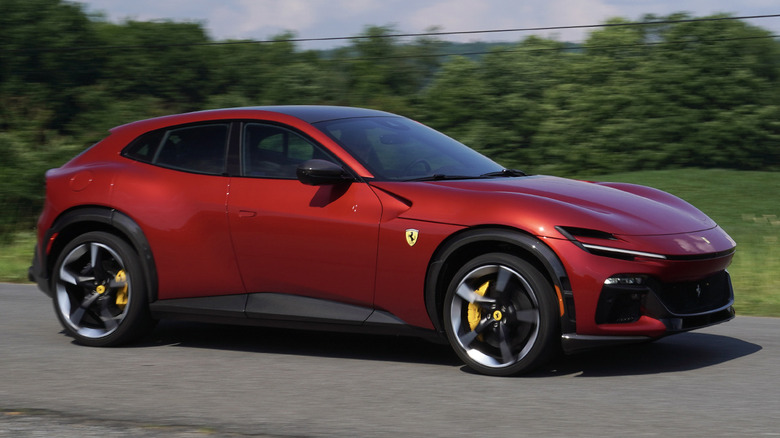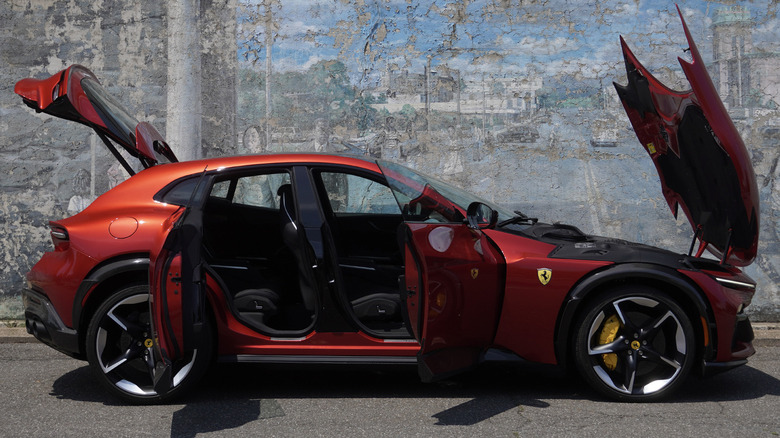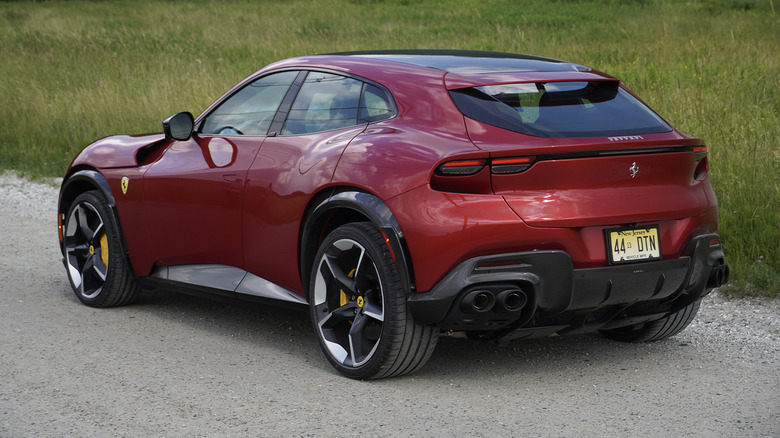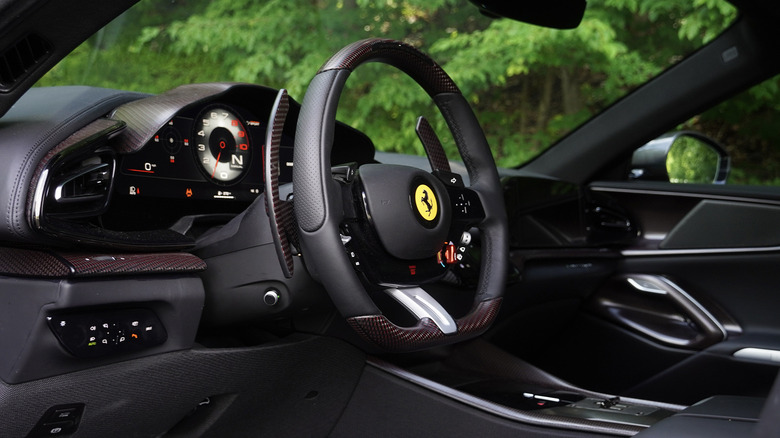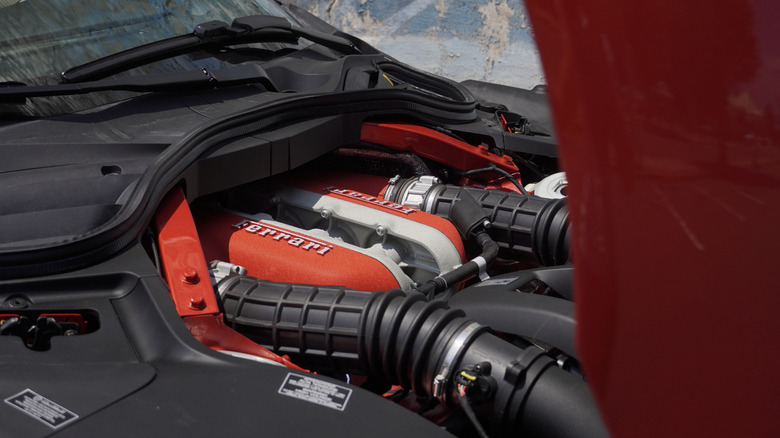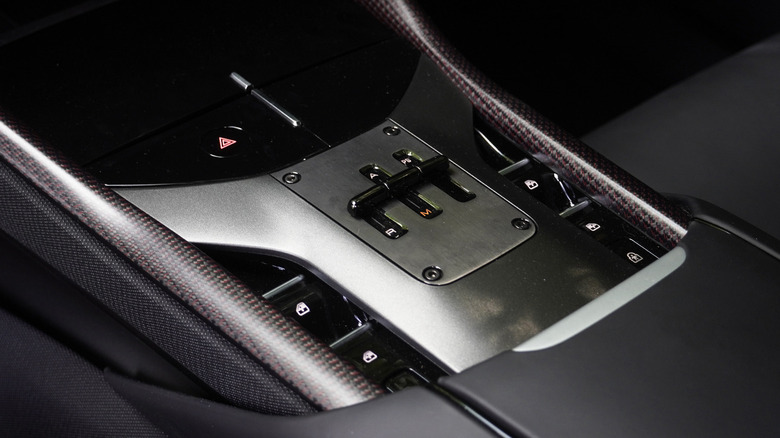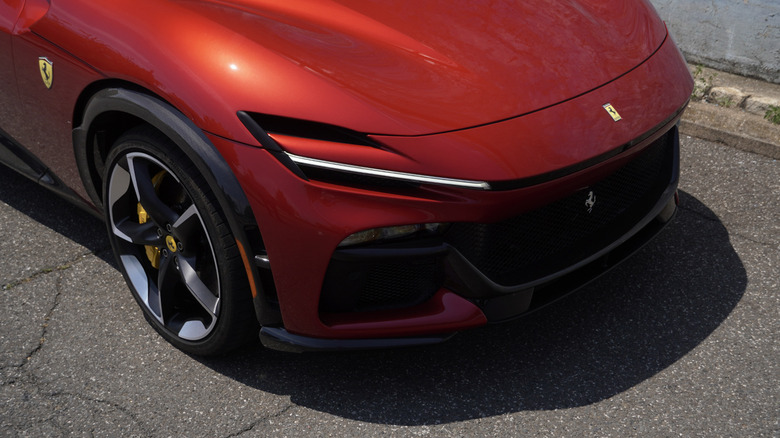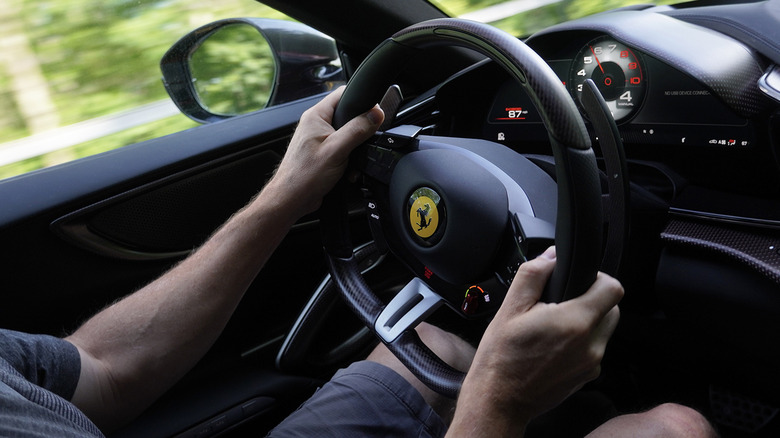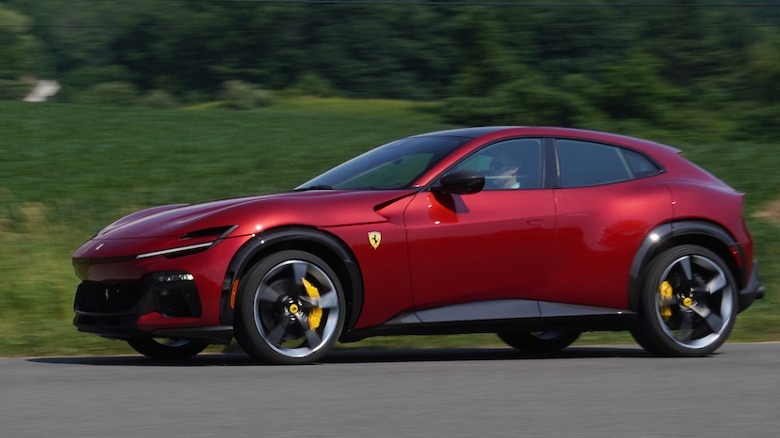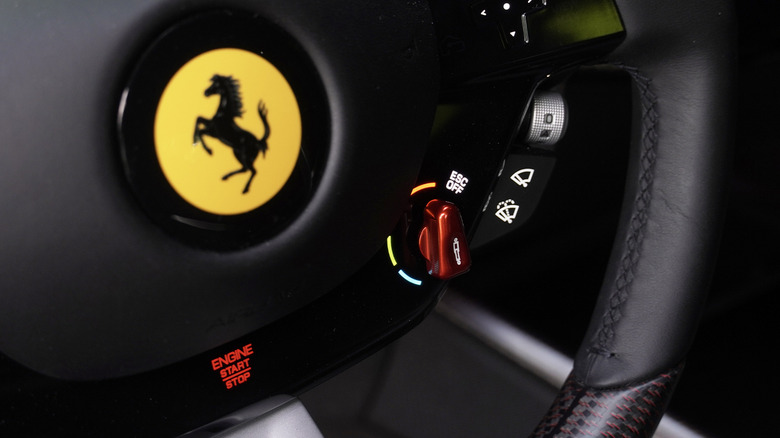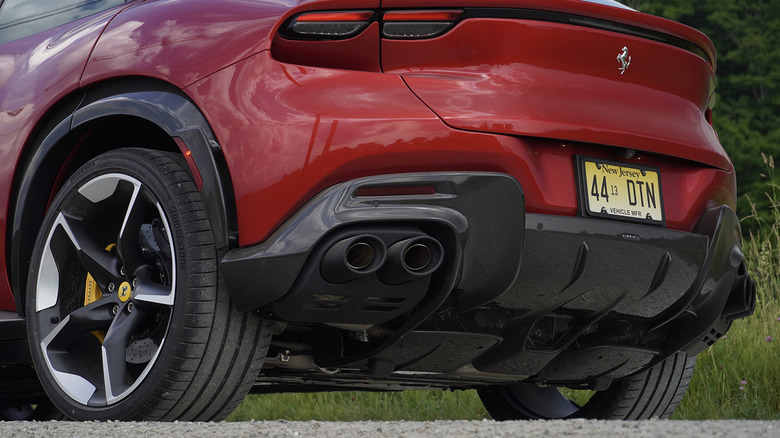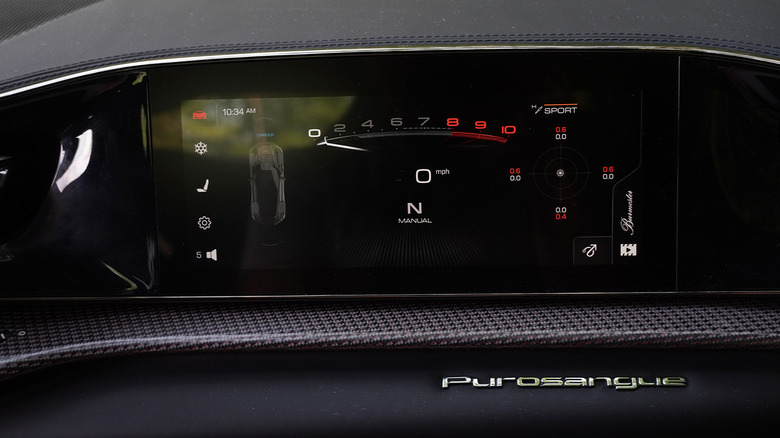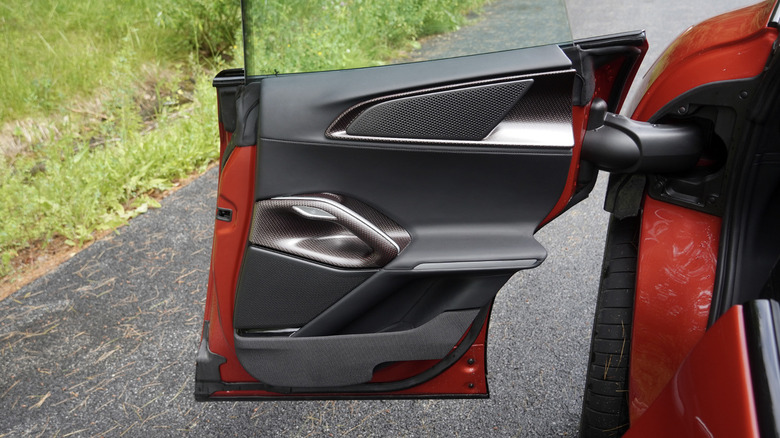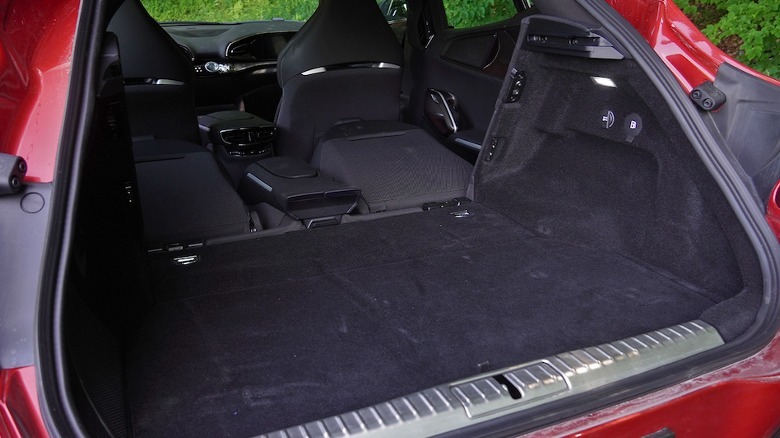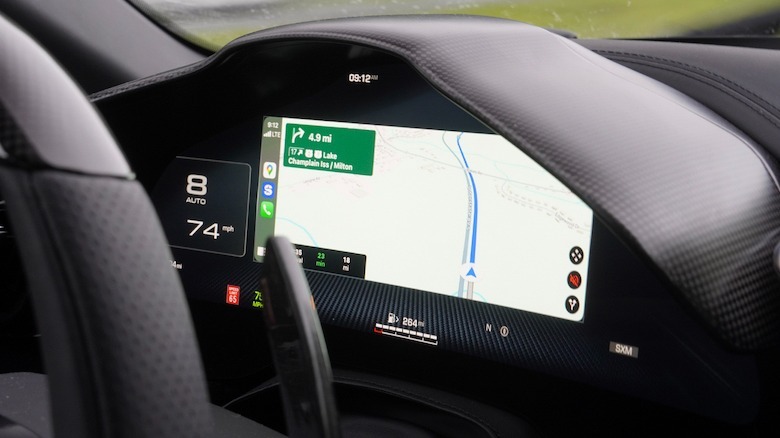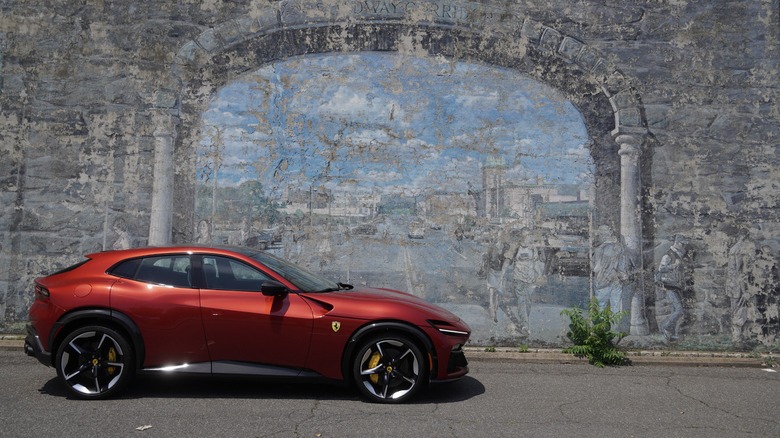Ferrari Purosangue First Drive: Is Redefining The SUV Worth Half A Million Dollars?
Never in a million years, Ferrari insisted. Repeatedly and resoundingly: never, ever, would we build an SUV. Yet, the resounding successes of so-called Super SUVs from Lamborghini, Aston Martin, Bentley, and Roll-Royce set the stage, and now the inevitable has finally arrived in the form of the Purosangue.
Purosangue translates to "pureblood" literally, or more accurately, "thoroughbred." No matter the definition—or pronunciation ripe for butchering by Americans—don't call this an SUV, Ferrari demands. Instead, the Purosangue represents Maranello's first attempt at building a practical four-door four-seater. And in person, all the naysaying and Mazda comparisons online simply fail to capture the svelte, muscular, almost predatory lines of this surprisingly large form.
Early reviews of the Purosangue emerged last year after a limited drive program in Italy. But more recently, Ferrari brought a herd out to New England for American media to experience on the winding roads of Upstate New York, Massachusetts, and Vermont. And after three days wringing out every last drop—often while splattered with raindrops—I can confirm beyond a reasonable doubt that this SUV is definitively a Ferrari.
The challenge of Ferrari's first-ever four-door four-seater
Ferrari faced quite a challenge while developing the Purosangue, namely because the new model known by the internal code F175 needed to stand apart from the rest of the pack. Especially given the mammoth headstart that Lamborghini's positioning within the Volkswagen AG umbrella afforded development of the Urus, Sant'Agata Bolognese's undeniable sales success.
Driving the Urus belies comprehension, if simply because this sibling to the pedestrian Volkswagen Atlas entirely redefined SUV performance. But in addition to the mind-melting acceleration, impeccable handling, and rip-roaring soundtrack baked into a commuter chassis, Lambo brought about something unfortunate with the Urus, as well: a certain dilution in the special-ness of actually spotting a Lamborghini out driving around. In Los Angeles, specifically, Uruses (Urii?) are a dime a dozen—despite the six-figure price tag—exactly the kind of phenomenon that Ferrari as a brand certainly needs to avoid.
A late entrant to the super SUV era
Being fair, I spy far fewer DBXs and Bentaygas and Cullinans on public roads, in LA or otherwise. And yet even those SUVs appear in traffic much more often than any Ferrari. Each also boasts something of a different use case: the DBX leans toward sleek styling and hardcore performance with the 707 package, while the Bentayga stretches out into luxurious lifestyle, and the Cullinan turns heads with pure overwhelming presence.
Despite so many obvious differences, the latter also approaches closest to the Purosangue's half-million-dollar pricing. It's also the only one of the group that I have yet to drive, though the more plush, less honed edges of a Rolls leave me somewhat less interested than in the new SUV from Ferrari.
Ferrari doing Ferrari best
Sorry, don't call it an SUV. To an extent, Ferrari's insistence on avoiding the acronym holds up. Was either the FF or GTC4Lusso a true hatchback? Or more of a grand tourer with some additional utility thrown in for good measure? Regardless, the Purosangue delivers on the pure-blood ethos best, by refusing to budge on Ferrari's long-standing love affair with naturally aspirated V12 engines.
Specifically, this V12 tucked below a forward-hinging clamshell hood displaces 6.5 liters and, without turbochargers bolted on or complementary electrification strategies, still manages peak ratings of 725 horsepower and 528 lb-ft of torque. The mill mounts low in the Purosangue's chassis and entirely behind the front axle line, and can rev to a screaming 8,000 RPM—or slightly higher before fuel cutoff, I believe.
Sticking with the V12
Blasting through the New England hills, the echoes and wails and rasps of intake, exhaust, and liftoff overrun burbles absolutely teleported me straight back to Emilia-Romagna, where I drove my first V12-powered car ever, an Aventador. And then, almost exactly a year later, a Miura. Nothing matches the V12 layout, in my humble opinion, thanks to the impeccable balance made possible by essentially combining two inline-sixes.
Where other super SUV manufacturers rely on turbos and—at least from Porsche—hybridization, Ferrari stuck with the V12 at least partially because of that smooth-revving nature. And a new eight-speed DCT gearbox shared with the 296 GTB helps to mitigate any lack of low-end torque that turbos and electrification typically contribute. A few pulls on the two enormous column-mounted paddle shifters and the V12 barks up into its power band, happily providing plenty of shove at any speed anywhere near the speed limit.
AWD carries over from FF and GTC4Lusso
The Purosangue required all-wheel drive to keep up with the competition, though, and so Ferrari's unique PTU system carries over from the FF and GTC4Lusso, mounted ahead of the engine housing the equivalent of second and fourth gear, and managed by dual clutches that can send power to the front wheels. The PTU allows Ferrari to skip a traditional four-wheel-drive transfer case and mount the eight-speed DCT in a transaxle location between the rear wheels, creating an ideal 49:51 front-to-rear weight distribution.
The PTU and rear transaxle, as well as the lack of a transfer case, all combine to keep the Purosangue relatively lightweight for a V12-powered four-door. Ferrari traditionally declines to publish anything other than dry weights, and in this case third-party testing suggests that the claimed 4,482 dry pounds results in just shy of 4,800 pounds with all fluids. That heft rides low-slung amid large staggered wheels, and the chassis itself also weighs 4% less than the GTC4Lusso's despite the increased size and a 30% improvement to torsional rigidity.
Suspension from Multimatic in the mix
The transaxle layout and nifty four-wheel-drive system help to optimize weight and the Purosangue's polar moment of inertia, but perhaps more importantly than all of the above, Ferrari claims that a novel suspension system made the entire concept of a four-door four-seater possible. Adaptive dampers supplied by Multimatic combine a 48-volt motor actuator with traditional fluid valving, together called True Active Spool Valve (TASV) technology.
This contrasts with Multimatic's passive DSSV dampers seen on many General Motors vehicles, and in fact hews more closely to the chassis and suspension developments that Multimatic contributed to the WEC and IMSA's new LMDh Hypercar class. The damper motors can actuate 20 times per second, using a three-phase brushless electric motor to transmit force back into the ground, rather than simply absorbing impacts.
This setup differs from McLaren's hydraulically linked Proactive Chassis Control suspension programming, and Ferrari tuned the TASV to allow for a happy amount of body roll. Even if I struggled to compress the complex engineering into just a few paragraphs here, on the road in the real world, the system works impressively—this super SUV avoids riding excessively flat like the DBX (before the model year 2025 update), nor anywhere near as boatly as the Bentley, and never squats quite as much as the Urus (non-Performante).
Wet days in the Purosangue
Instead, the TASV system delivers just enough chassis feedback through the seat to match the tight steering, which though a fair amount lighter than the 296 GTS, provides pinpoint precision through corners. I hit a full 1 g of cornering load on damp roads, much higher than I expected to given the use of Bridgestone tires. That rubber measures a whopping 315 millimeters wide at the rear and 255 up front, but some Purosangues will also arrive equipped with more performance-focused Michelins (Pirelli winter tires are available, too).
While pushing the Purosangue hard on smoother winding roads, the whole package comes together in ways that crawling through city traffic simply fails to deliver. Dipping even moderately into throttle opens up a roar of intake, the all-wheel-drive system hooks up to launch the big Ferrari forward, then hauling into corners produces just enough weight transfer to improve front-end grip over that long nose. My drive partner encountered only one moment of four-wheel understeer skid, while braking downhill at absurd pace.
Exploring the limits of traction
And yet, when the tires broke loose, he simply rode into that initial input and the Purosangue's weight distribution prevented the rear tires from slipping too far out of line, or the fronts from chugging through to traction. Similarly, going up a hill later in the day after a spate of further rainfall, I found that with the outside tires loaded up, the drivetrain biases toward the rear tires enough to create the kind of grin-inducing oversteer that never requires a lift to control through opposite lock.
The Purosangue definitely responds differently based on drive modes, which I fiddled through via the "Manettino" dial on the steering wheel. Up in Sport or with ESC toggled off, of course, the more traditional Ferrari spirit emerges. But when a ridiculous downpour rendered the roadway almost invisible for about 10 minutes, despite my wipers blasting the raked front windshield clear and the rear window still somewhat visible thanks to the aero packaging, I certainly appreciated the Wet mode. And to an extent, that impressive drivability in such a sketchy scenario matters more in this case, if the intended buyer matches those of other super SUVs from other OEMs.
Functional styling makes the Purosangue special
The styling also blurs the line between aggressive and refined. Aero comes into play from the very front, where the V12 somehow requires less of a massive grille than expected thanks to functional side intakes and engine bay venting. The solution for today's de rigueur fender flares—just in carbon, on my Purosangue—almost looks separate from the body, as if the side panels drape down over the flares and wheels and tires. Even the steering wheel felt familiar after the 296, though with a couple of additional texture differences to better integrate controls.
Pushing the Purosangue further than I expected possible, Ferrari's decision to stick with the V12 engine entirely accentuates the company's lineage, as perhaps expected. However, the sheer size, despite impressive management via the Multimatics and transaxle layout, can create a bit of an up-here, down-there sensation, since even the best suspension in the world can only do so much with massive 22-inch and 23-inch staggered wheels riding on minimal tire sidewall.
Luxury experience in a super SUV
The sensation crops up less in town, even while riding over harsh potholes and speed bumps in Comfort mode, because in Comfort mode the Purosangue also delivers not just performance, but also more than ever, luxury in ways that supercars simply never need to. The eight-speed DCT gets taller seventh and eighth gearing for highway cruising at lower revs, plus a clutch-based sailing system (though, surprisingly, no cylinder deactivation).
Meanwhile, the transaxle and PTU setup also helps maximize interior volume, despite the V12 riding entirely behind the front axles. With the driver seat placed to my ideal setting—lower than on most SUVs, actually, despite my tiny torso and long limbs, not to mention the long hood—I still fit well in the rear seat, too.
Climbing in and out via the rear-hinging "welcome" doors adds another level of fanciness, and of course, surprisingly comfortable massaging and ventilated bucket seats all around help to accentuate the impression that long journeys in the Purosangue won't get tiring as in most supercars.
High concept, high risk, high reward
A few options stood out on my car, notably the red threads in carbon-fiber trim pieces to match the stunning exterior paint in a darker red than typical for Ferrari (some might call it almost blood or sangue-colored). I also definitely prefer the carbon-fiber roof versus the full panoramic chromatic glass, though a short ride in another journalist's glass-roofed car seemed to allow more of the engine's sonorous soundtrack to enter the cockpit.
Of course, I never forgot I was riding in a Ferrari—which means high concept, and therefore high risk and high reward. Using a brake-by-wire system on even a lightweight SUV clearly overstresses the system. Compared to the perfect braking of the 296, the Purosangue's massive 398 and 380-millimeter rotors, front and rear, work best during normal driving, but the programming lacks the ability to provide confidence during more serious driving. After the initial bite, a sort of blank inch or so of additional pedal travel follows before the brakes then clamp down far harder than expected. Ferrari used the same system previously, but the 296 is a turbo-hybrid, rear-wheel-drive supercar and this naturally aspirated, internal-combustion, all-wheel-drive SUV perhaps deserved traditional hydraulic components given the weight, size, and center of gravity.
The infotainment system, despite some updates, still causes frustration regularly, too. Adding CarPlay to the gauge screen deletes almost all of the regular driving info—especially the tachometer showing how far the V12 revs up. More textural designs for the haptic steering wheel controls do help a bit, but still needs more work (and one car's buttons worked much better than the other). As great as skipping a center touchscreen helps with overall dash design, in this case the potential use of a Purosangue as a daily driver or family car maybe hints at the reason that layout emerged in the first place. Or at the very least, I figure that allowing CarPlay to display on the passenger's screen might help, instead.
The super SUV re-imagined
But the whole point of every single detail I've mentioned on the Purosangue—for better or worse—is to differentiate Ferrari's first-ever four-door four-seater from the rest of the super SUV segment. In that regard, the Purosangue undeniably succeeds in ways that every other OEM will no doubt envy.
By capping the Purosangue at just 20% of total production, outside of perhaps Rodeo Drive, Purosangue sightings will never be as common as the Urus. This avoids any dilution of the brand's exoticism–as does the starting price of $393,350, rising to $423,686 for the 2025 model year, and hitting almost $577k with options for the example you see here–but should also help prevent future depreciation.
Then again, can a Purosangue match the daily drivability of a Urus, a Bentayga, or a DBX707 in the first place? Even if this Ferrari is truly unlike the others, my three days in New England proved that doing so requires few sacrifices in an SUV that was never intended to be a traditional SUV in the first place.
